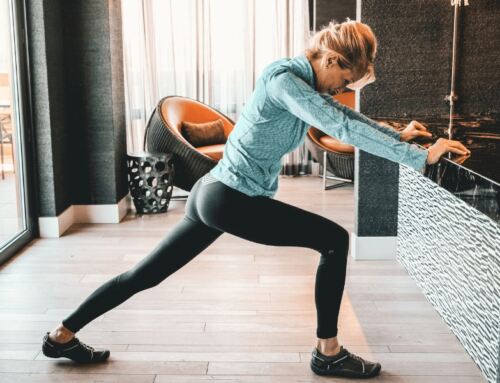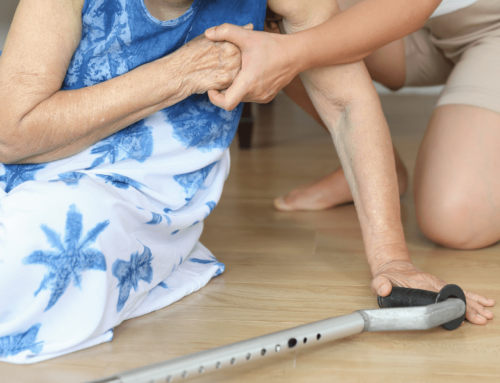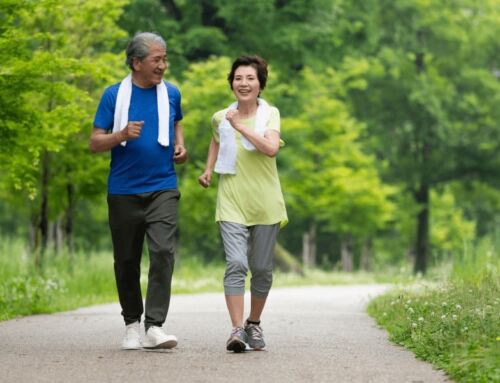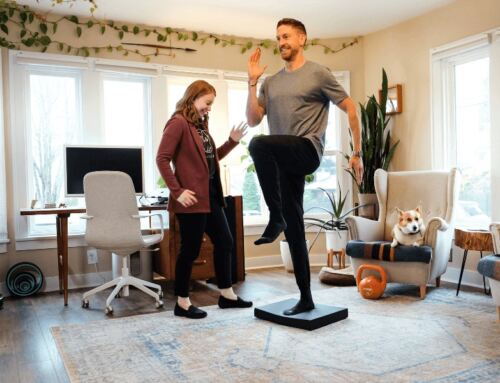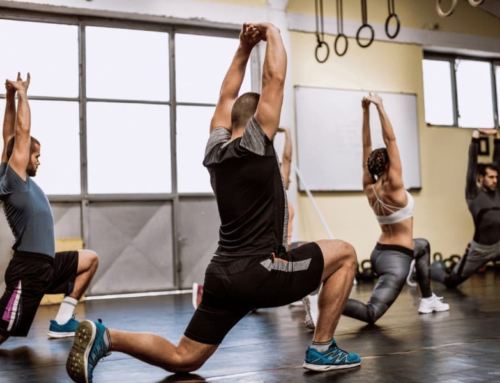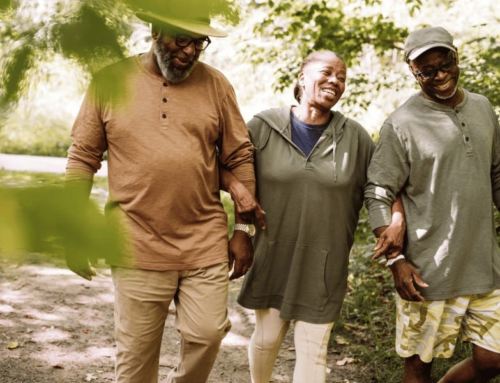
FOOSH! Here Is How You Can Prevent a Fall
What is a FOOSH?
“F.O.O.S.H.” may a fun word to say, but it actually stands for a “Fall On an Outstretched Hand.” When a loss of balance occurs, it is a normal response to reach out towards a stabilizing surface to try and catch yourself. However, the impact through the upper body can often lead to debilitating injuries such as fractures of your wrist or shoulder that would be worse than the fall itself. This is called a “Foosh Injury.”
Here is everything you need to know about how to prevent a fall.
Every year, there are 400,000 fractures related to falls in the U.S. Other common injuries that can result from a fall include hip and spine fractures, lacerations (cuts), and contusions (bruises). According to the Mayo Clinic, falls are the #1 cause of fatal and non-fatal injuries for patients above the age of 65.
Falling does not just lead to injuries, it can often lead to a pattern of decreased activity that makes a lot of people afraid to even leave the house or participate in the activities they love to do. But don’t worry, it isn’t all doom and gloom. Falls are easily preventable and we are here to help you prevent any of the negative side effects associated with losing your balance.
The American Physical Therapy Association defines a fall as “any event that leads to an unplanned, unexpected contact with a supporting surface, such as the floor or a piece of furniture, that is not the result of a push or shove or the result of a medical event, such as a heart attack or fainting.”
What are the leading causes of falls?
Your risk of falling depends on both your physical traits and external environment…
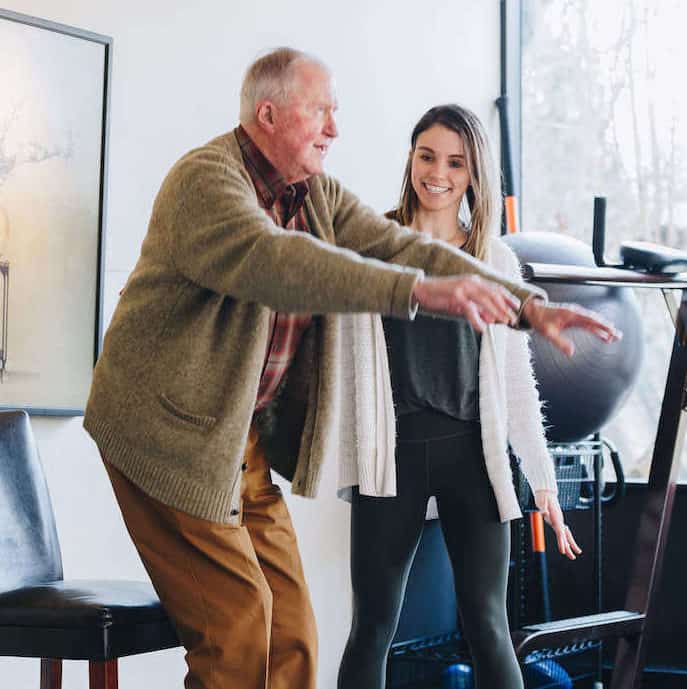
Physical Trait Risk Factors:
- Muscle weakness and inflexibility
- Proprioception impairments (body position awareness)
- Abnormal walking patterns or posture
- Physical inactivity and decreased endurance
- Vestibular impairments (inner ear aspects of balance such as dizziness)
- Fear of falling and having previous falls: Yes, it’s true. The fear of falling itself can actually lead to more falls. This is likely due to the reduced physical activity and independent mobility that comes along with the fear of having had a fall.
- Vision impairments
- Side Effects of Medication
- Sensation impairments: ie, numbness or tingling in the feet
- Illness history (especially osteoporosis/osteopenia)
Environmental Risk Factors:
- Improper footwear
- Improper use of assistive device (Ex: cane, walker, etc.)
- Lack of handrails on stairs or grab bars in bathrooms
- Clutter (Ex: throw rugs, electrical cords, etc.)
- Low chairs/couches
- Poor lighting: people are more likely to fall in low lit environments.
- Poor planning (Ex: standing on unstable chairs to reach for items)
- Wet floors
- Pets
Since falls are so common, there are often a number of myths associated with falling. Here are a couple common ones we would like to dispel…
“I’m just clumsy” – Sure, some folks may have two left feet when it comes to the dance floor, but even a “clumsy” person can improve their balance and strength to prevent a fall!
“I’m just getting old” – Age is not an inherent limitation. Choose to move beyond this excuse and work towards your movement goals. Plenty of older adults live very active lifestyles as marathon runners, dancers, hikers, baby-sitter-extraordinaire grandparents, and more!

What Can I Do to Prevent a Fall?
Contact a physical therapist!
Research shows that individuals at a high falls risk who participate in a focused physical therapy program have a 31% reduction in falls over the course of a year compared to people who do not participate.
At MovementX, our therapists are trained to create a plan to prevent a fall from happening, discuss how to recover if a fall occurs, and work to get you back to doing the activities you love without fear of falling.
Here are just a few of the ways MovementX can help you prevent a fall:
- Medical History Review: Through a thorough intake of your current and past health history, we can help to determine evidence based reasons for your loss of balance. We will also work closely with your physicians and any other health or wellness partner to make sure we have all the facts before starting treatment.
- Physical Examination: After a thorough physical examination, your physical therapist will determine what specific areas may be putting you at risk whether it be strength, balance, mobility, your eyesight, your vestibular system, or something else.
- Home Assessment: We are able to come to your home and evaluate what environmental risk factors you may not be aware of that could lead to the risk of a fall. We will make sure this process is collaborative and that all parties are in mutual agreement before recommending any changes.
- Physical Therapy Treatment: Based on the results of your medical history and physical examination, we will put together a treatment plan of care. This will most likely involve corrective exercises targeted at your balance and strength. However, it may also have components of manual therapy—the act of using hands on techniques to address limitations in your joint mobility or muscle flexibility.
- Plan: We want to make sure that you feel safe and motivated towards your physical therapy plan of care, so we will always collaborate with you regarding implementation. If you prefer home visits, coming to clinic, virtual sessions, or monthly check-ins…we will work with your needs to make sure you make the most progress possible towards your goals.
- Referral Coordination: Our physical therapists will also help guide you to other trusted healthcare partners who might be a great asset to the fall-fighting team, such as pharmacists, optometrists, and neurologists (just to name a few).
We hope this article helped you better understand how you can prevent a fall. Let us help you determine your fall risk assessment and create the best possible fall prevention plan.

References:
- https://mayoclinichealthsystem.org/hometown-health/speaking-of-health/falls-and-fall-prevention
- https://www.moveforwardpt.com/symptomsconditionsdetail.aspx?cid=85726fb6-14c4-4c16-9a4c-3736dceac9f0
- https://www.moveforwardpt.com/symptomsconditionsdetail.aspx?cid=1bb9c784-a874-43b1-976f-d0de03c19f99#.VT54S9JViko
- https://www.ncbi.nlm.nih.gov/pmc/articles/PMC3413733/
About the Author
Dr. Peter Nguyen is a physical therapist, fitness instructor, and health consultant with MovementX in Orange County, CA. He specializes in the treatment of headaches and migraines, rehabilitation after a stroke, and the management of chronic pain. Peter Nguyen also enjoys helping older adults stay strong and healthy. He also serves as a health equity advocate ensuring quality care is delivered to underserved populations in the community.



